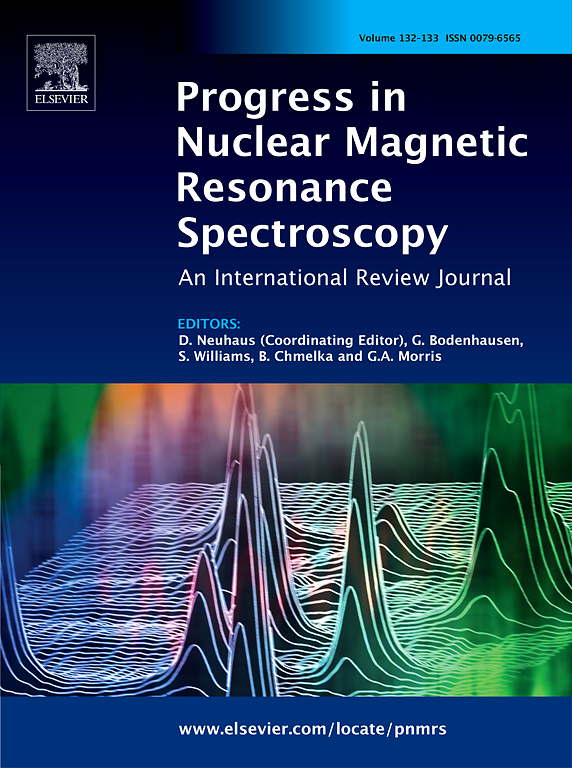如何从头开始构建核磁共振成像机的经验
IF 8.2
2区 化学
Q2 CHEMISTRY, PHYSICAL
Progress in Nuclear Magnetic Resonance Spectroscopy
Pub Date : 2025-06-02
DOI:10.1016/j.pnmrs.2025.101574
引用次数: 0
摘要
核磁共振仪器正逐渐被自己动手的社区所使用,并且人们对从零开始建造核磁共振成像仪器的实际方面越来越感兴趣。这次审查的重点是这一努力所涉及的不同步骤、所遇到的挑战及其解决办法;它是基于2024年春天在新加坡科技与设计大学举行的为期四天的“黑客马拉松”(名为“ezyMRI”)中获得的经验。该活动有一天用于教育讲座,三天用于系统构建和测试;来自世界各地的70名年轻研究人员组成了6个小组,分别专注于磁体、梯度线圈、射频线圈、控制台、系统集成和设计,在3天内共同制作了一台可以工作的MRI仪器。本文章由计算机程序翻译,如有差异,请以英文原文为准。

Experience of how to build an MRI machine from scratch
Nuclear magnetic resonance instruments are becoming available to the do-it-yourself community, and there is increasing interest in the practical aspects of building a magnetic resonance imaging instrument from scratch. This review is focused on the different steps involved in such an endeavour, the challenges encountered and their solutions; it is based on experience gained at a four-day “hackathon” (named “ezyMRI”) at Singapore University of Technology and Design in spring 2024. One day of this event was devoted to educational lectures and three days to system construction and testing; seventy young researchers from all parts of the world formed six teams focusing respectively on magnet, gradient coil, RF coil, console, system integration, and design, which together produced a working MRI instrument in three days.
求助全文
通过发布文献求助,成功后即可免费获取论文全文。
去求助
来源期刊
CiteScore
14.30
自引率
8.20%
发文量
12
审稿时长
62 days
期刊介绍:
Progress in Nuclear Magnetic Resonance Spectroscopy publishes review papers describing research related to the theory and application of NMR spectroscopy. This technique is widely applied in chemistry, physics, biochemistry and materials science, and also in many areas of biology and medicine. The journal publishes review articles covering applications in all of these and in related subjects, as well as in-depth treatments of the fundamental theory of and instrumental developments in NMR spectroscopy.

 求助内容:
求助内容: 应助结果提醒方式:
应助结果提醒方式:


